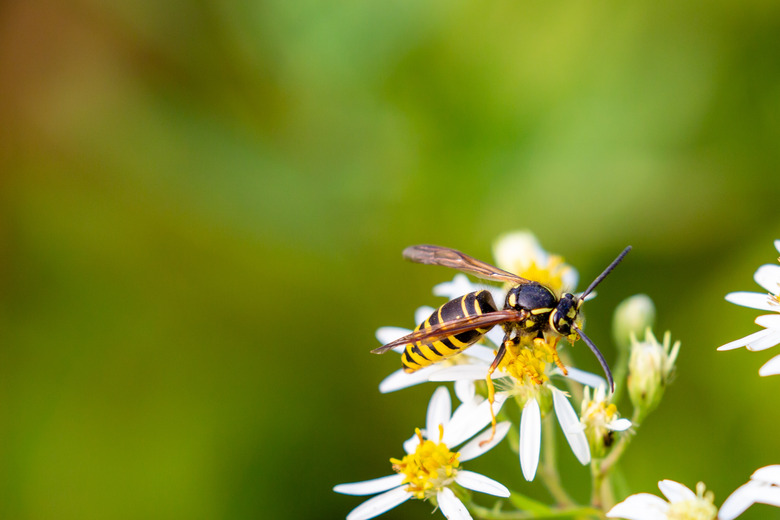Differences Between Wasps And Mud Daubers
We may receive a commission on purchases made from links.
Can you tell the difference between a mud dauber (Sceliphron caementarium) and a wasp (Vespidae) just by looking? Mud daubers are a type of wasp, so it's tough to compare a mud dauber to a wasp, which is a general category of flying insects. Paper wasps (Polistes dominula) and yellow jackets (Vespula vulgaris) are two common types of wasps you might see in addition to mud daubers. Comparing the features of these types of wasps can help you determine what type of infestation you have.
What Are Mud Daubers?
What Are Mud Daubers?
Mud daubers are a type of wasp that use mud to build their nests. Like other types of wasps, they fly and can sting. These solitary insects go through egg, larvae, pupae, and adult phases during their life cycle. They can also get rid of some pests, so they can be beneficial and don't necessarily need to be removed or treated with pesticides.
Mud Dauber vs. Wasp Appearance
Mud Dauber vs. Wasp Appearance
Since mud daubers include different wasp species, the appearance can vary slightly based on what type you're seeing. An adult mud dauber typically grows to be 1/2 to 1 inch long with a black or blue metallic body and may have yellow or green markings along the body. They sometimes have a long, skinny segment that connects the thorax to the abdomen.
There are also multiple species of paper wasps, so the appearance can vary slightly. They typically grow to about 1 inch, but they can range from 1/2 to 1 1/2 inches long. Most paper wasps are dark brown or a reddish-brown color with black wings and sometimes have yellow markings on their bodies.
Yellow jackets are typically a little smaller, often closer to 1/2 inch, but they can reach 1 inch. They usually have a black body with yellow stripes and are sometimes mistaken for bees. Paper wasps and yellow jackets tend to be more brightly colored than mud daubers.
Where Wasps Live
Where Wasps Live
Mud daubers create mud homes where their young can grow. The specific shape can vary by the species of mud dauber. For example, an organ pipe mud dauber makes several tubes that look similar to organ pipes, while the nest of a potter wasp looks more like a clay pot.
Paper wasps create homes out of paper made from chewed-up wood or vegetation. The resulting nest can look like an umbrella with open hexagonal cells, sometimes with as many as 200 cells per nest. They're often attached to a doorway, eave, tree branch, or another horizontal surface that can provide protection.
Yellow jackets also create paperlike nests consisting of tiers of rounded combs. They enclose the nest with several layers surrounding the outside, unlike paper wasps, which leave their nests open. Yellow jacket nests can be underground, in cavities of trees or walls, or on tree branches.
Differences in Wasp Behavior
Differences in Wasp Behavior
A mud dauber tends to be a solitary insect, but you might notice multiple nests together if the location is optimal. They can sting, although they very rarely sting humans. They usually only sting if you try to touch or hold them. The insect can sting you multiple times, and the sting can cause an allergic reaction.
Paper wasps are social insects with a queen and workers. They'll sting you to protect their nest, but typically, they don't sting unless you disturb them. They can sting multiple times and can cause an allergic reaction.
Yellow jackets tend to be the most aggressive and will sting you multiple times to protect their nest. They're also social wasps with potentially thousands of the insects living in a colony. They can be beneficial, but their aggressive nature makes yellow jackets dangerous near homes. While you can get wasp spray that kills yellow jackets, trying to get rid of them yourself can be very dangerous if they decide to attack. Hiring a pest control service is a safer option.
